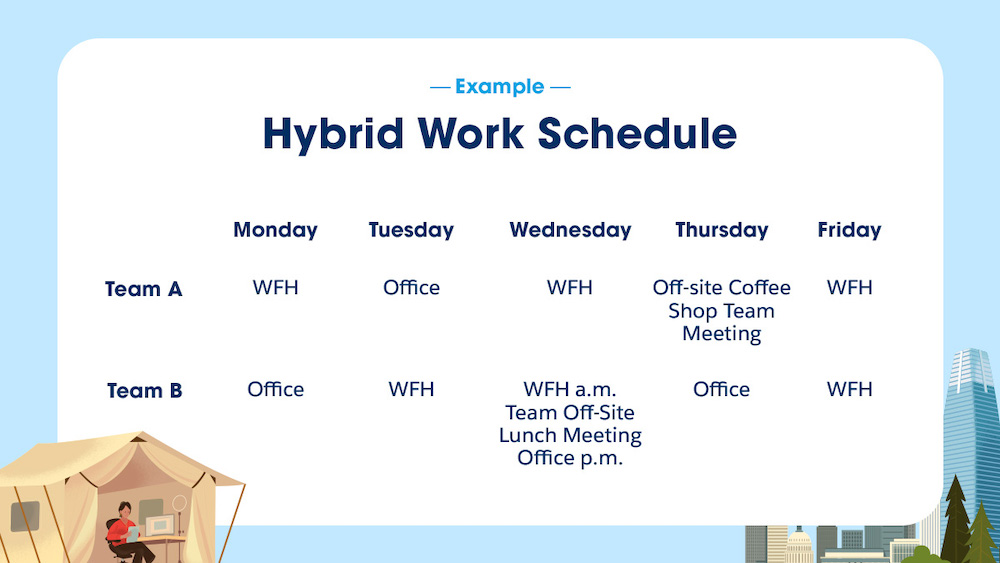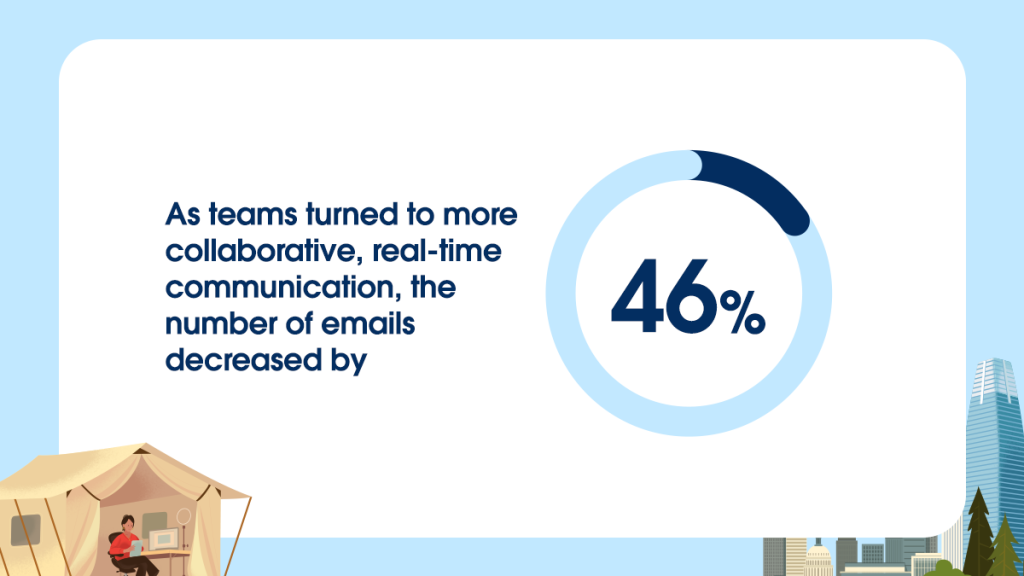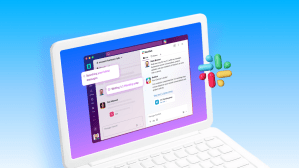Editor’s Note: See the latest on Salesforce’s Success From Anywhere strategy.
When was the last time you heard the phrase “cordless phone?” It’s probably been a while; technology has progressed to a point where nearly every phone is cordless, rendering the word ‘cordless’ almost obsolete.
Similarly, today’s “hybrid workplace” will soon be called just “the workplace.” The physical place where you sit while at work won’t matter nearly as much as cloud access and the online tools that connect you to your coworkers. Work won’t be somewhere you go, it’ll just be something you do.
Today, organizations of all sizes are looking to build hybrid workplaces to accommodate this new way of working. Salesforce itself has made big changes to address this shift from a physical HQ to a digital HQ, knowing that hybrid work is here to stay.
This article explores common questions about hybrid workplaces:
- What is a hybrid workplace?
- What are hybrid workplace models?
- What impact does the hybrid workplace have on company culture?
- How does technology enable the hybrid workplace?
- Why is cybersecurity important in a hybrid workplace?
What is a hybrid workplace?
By definition, a hybrid workplace combines in-office with remote work and, if done right, employees can be as productive when working remotely as they are in the office. Employees should also be able to flip seamlessly between the two, spending a few days at home, and coming into the office when needed, without any dip in productivity.
In a business climate where nine out of 10 companies plan to adopt a hybrid workplace model, companies must reinvent the processes and tools they previously relied on — such as in-person meetings, company-wide emails, and strategy offsites — to adapt to the digital age.
For Salesforce and Slack, this meant creating a “digital HQ,” and providing employees a single source of truth and one location to securely collaborate, share documents, unite internal and external teams, and access data.
“We call it the digital HQ because in this all-digital, work from anywhere world, your digital headquarters is more important than your physical headquarters,” Salesforce Co-CEO Bret Taylor told CNBC. “Every company needs a digital HQ to connect its employees, customers, and partners, and thrive in a work-from-anywhere world.”
What are hybrid workplace models?
A hybrid workplace model can be anything that combines work from home and in-person, office-based work. Companies and teams around the world are using a multitude of different schedules, infrastructure, and policies to offer employees both in-person collaboration, in-person quiet workspaces, and remote work capabilities.
For example, Salesforce’s Success from Anywhere model gives employees three ways of working: Office-Flexible, Home-Based, and Office-Based.
- Office-flexible refers to employees working in the office 1-3 days a week (on average) and the remainder remotely
- Home-based refers to employees working remotely 100% of the time
- Office-based is for employees that do not work remotely and are in the office 100% of the time
Salesforce’s Flex Team Agreements empower teams to decide how, when, and where they work — including how many days a week they come into the office and what kind of work they will do at home.
With work being the constant and place being the variable, schedules are made with purpose and are based on intentionality.
The office becomes an experience. There is still a very important need and purpose for physical space like our Towers — to bring people together in our Success From Anywhere world. Every time someone comes into our space, our goal is that it is always a world-class experience. Yet, we know that the way our employees use the office will continue to evolve as we come back. And with that, we are planning for flexibility.
Brent Hyder, President anD ChiEF PEOPLE OFFICER
We aren’t just changing where we work, but how we work. Just like maintaining long-distance relationships with friends through technology, new hybrid working models are challenging workers to collaborate with their colleagues in new and different ways.
What impact does hybrid work have on company culture?
Humans crave connection. The COVID-19 pandemic forced us to find new ways to connect — and a funny thing happened to company culture and communication along the way.
A survey of U.S.-based knowledge workers showed that 75% of employees prefer to interact with colleagues as they would a friend. In a way, COVID pushed company cultures away from rigid communication formats to more fluid communication. With a remote workforce, adapting to less formal modes of communication was essential to keeping momentum and connection in the early days of the pandemic — from Zoom calls in the kitchen to chat messages while on a walk. The same research showed 76% of workers stating that a company’s collaboration style is a direct reflection of work culture.
“With so many people working from home and not being able to interact and build social capital and relationships, Slack as a digital HQ really provides a digital substitute for those one-to-one, one-to-few, as well as one-to-many digital interactions,” A study of more than 1,500 knowledge workers found that employees dissatisfied with their technology offerings and tools are twice as likely to say they are burned out, and half as likely to say they’re generally happy with their work. They view their employers as responsible for providing the right technology they need to do their jobs.
“When we provide employees with personalized cloud, social and mobile-connected experiences, it’s a huge engagement driver,” said Jill Unikel, SVP, Employee Communications & Engagement, Salesforce. “There’s the business case that it helps teams and employees perform their jobs more effectively, but the bonus really comes from employees being more motivated and engaged, leading to even more productivity.”
How does technology enable hybrid working?
If hybrid work is less about where you work and more about how you connect, then technology is more central than ever.
Just a few years ago, employers played up snack stations and ping pong tables to attract employees. Moving forward, there’s more weight placed on a flexible work environment — and tools and technology that make collaboration easier among distributed teams.
For example, one element Slack and Salesforce focus on is integration. Keeping employees, teams, and customers in one application helps save time, freeing them up for deeper, more focused work. The example below shows how employees from different teams can collaborate on a social media request and manage workflows from one app.
Data shows that this idea of integration can be powerful. This year, with the addition of Slack at Salesforce:
- Individual and team productivity increased by 16% and 13%, respectively
- The number of emails sent decreased 46% as teams turned to more collaborative, real-time communication
- Employees sent 58.7 million Slack messages and conducted 489,000 Slack Huddles — impromptu voice chats — in a 30-day period
Why is cybersecurity important in a hybrid work environment?
The hybrid workplace model puts an increased focus on cybersecurity. To offer employees the freedom to work from anywhere, employers need to ensure corporate data is readily accessible yet secure.
Protecting data doesn’t have to be complicated — the strongest cybersecurity strategies are those that nail the basics. This includes:
- Enabling multi-factor authentication (MFA): MFA can drastically reduce the odds of unauthorized access even if a user’s credentials are compromised.
- Patching devices: This protects corporate devices from known vulnerabilities and also automatically adds necessary new features, removes outdated ones and fixes performance issues.
- Being aware of phishing emails: CISOs and IT leaders can raise awareness of these threats and how to spot them. Employees should be mindful of opening emails and attachments if they do not recognize the sender or if something seems off.
- Securing connections through VPN: By requiring remote employees to use a virtual private network (VPN) on devices with access to business data, companies can dictate the terms of engagement when sending or receiving sensitive information through otherwise public connections.
- Securing meetings: With videoconferencing at an all-time high, it’s more important than ever to review the security settings within your web conference platform of choice. This includes using a platform’s built-in security features, such as meeting rooms, passwords and screen-sharing permissions, and using passwords.
“Like washing your hands during a pandemic, an ounce of prevention can make all the difference,” said Jim Alkove, Salesforce’s Chief Trust Officer.
What’s the future of hybrid work?
Conversations surrounding hybrid work may have spiked in 2020, but they’re not going away anytime soon. The rise of hybrid workplaces coincides with the demand for digital skills; one study forecasts that emerging technologies will increase demand for digital skills by up to 50% across the U.S. and Europe in the next decade.
From working in an autonomous vehicle to leveraging augmented and virtual reality technology, we’ve only scratched the surface of hybrid workplace possibilities.
“This is a once in a generation opportunity for every company to reinvent themselves and make work more flexible, inclusive, and productive,” said Stewart Butterfield, CEO and Co-Founder of Slack.
And another generation from now, “hybrid workplace” will join “cordless phone” in a box of phrases on the shelf somewhere, quietly gathering dust.




















